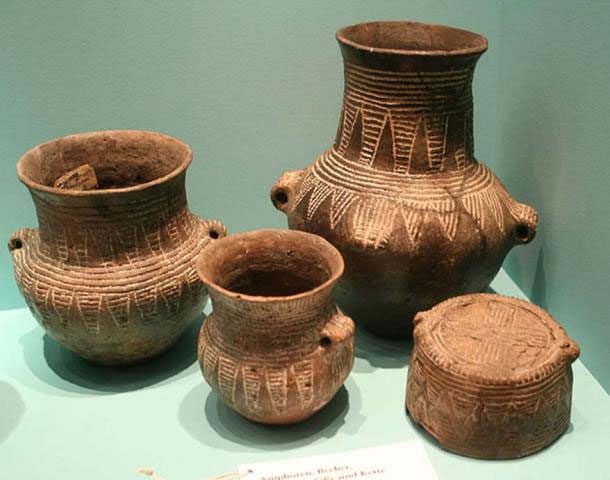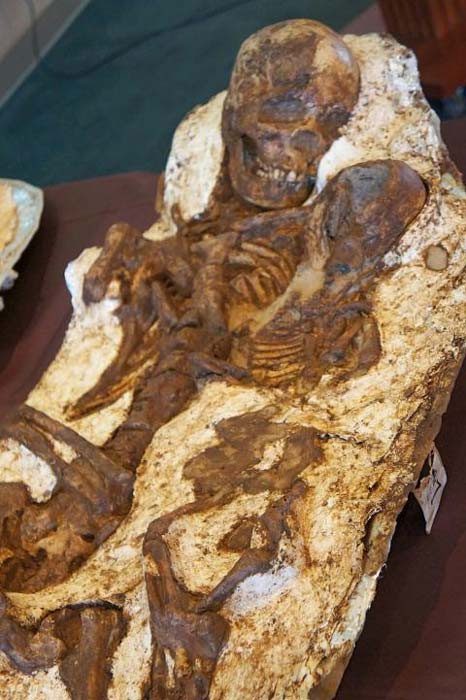The image of a Stone Age skeleton of a mother cradling her child in a shared grave has quickly gone viral, attracting attention from major news organizations ranging from Fox News to the Huffington Post.
Typically, few people are interested in archaeological discoveries—broken pottery, scattered bones, often showing signs of cannibalism or particularly ancient carbon dating to capture the mainstream media’s attention. However, a discovery from Taiwan announced last year has proven to be an exception to this rule.
The Origins of the Mummified Mother and Child
The scientific excavation began in 2014 and took about a year to complete. A team of archaeologists led by Chu Whei-Lee from the National Museum of Natural Science in Taiwan worked on a Neolithic site located 6.2 miles (10 km) off the western coast of Taiwan.
Today, that area is known as Taichung City, but the site itself was named An-ho. Experts believe that the coastline has changed over the years and that An-ho was once a coastal village. Indeed, over 200 shark teeth have been found within the residential areas of this region; however, it remains unclear whether these teeth were used for practical, decorative, or spiritual purposes. The residents of An-ho were likely the Dabenkeng people.
“The Dabenkeng were the first farmers in Taiwan, and they may have come from the southern and southeastern coasts of China around 5,000 years ago,” stated Chengwha Tsang of Academia Sinica in Taiwan.
“This culture is the earliest Neolithic culture found in Taiwan to date.” (Drake, 2016) The Dabenkeng culture of Taiwan is characterized by pottery and stone decorations with cord markings.

An example of cord-marked pottery. The Dabenkeng culture of Taiwan (to which the mother and child are believed to belong) is characterized by pottery and stone decorations with cord markings.
While Dabenkeng culture persisted until the 3rd millennium BCE on the Chinese mainland, the Dabenkeng of Taiwan only lasted until around 4,500 BCE. However, from Taiwan, the Dabenkeng people spread throughout Southeast Asia and Oceania, bringing their culture and language with them. Tsang (Drake, 2016) noted: “They are likely the earliest ancestors of the Austronesian language speakers living in Taiwan and the Pacific islands.”
At An-ho, 48 graves have been discovered, among which are five children. The most intriguing is the shared grave of a mother looking down at her child cradled in her arms. It remains unclear how they died.

The skeleton of a young mother cradling her child.
The lead archaeologist, Chu Whei-Lee, stated: “The young mother cradling her child surprised us the most. I suspect they were buried beneath the house by their loved ones,” she added, though more evidence is needed to support that view (Drake, 2016). “When it was excavated, all the archaeologists and staff were very shocked. Why? Because the mother was looking down at the child in her arms,” Chu Whei-Lee (Hamacher, 2016) remarked.
Further examination, including DNA analysis of the mother and child as well as other graves, is still ongoing. What we know is that the mother was 160 cm tall and the child was about one and a half feet (50 cm) tall.
Carbon dating indicates their burial dates back approximately 4,800 years, placing them in the Stone Age of the island. The bodies were oriented in a typical North-South direction. Unusually, they were placed lying on their backs (instead of face down like other graves at the site). Furthermore, the mother’s face was tilted to the right and downward so that she could look at the child in her arms, even in skeletal form some 5,000 years later.
Undoubtedly, this ancient moment of maternal affection is what has helped this pair become a modern viral sensation.





















































